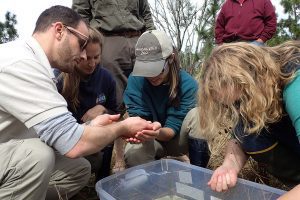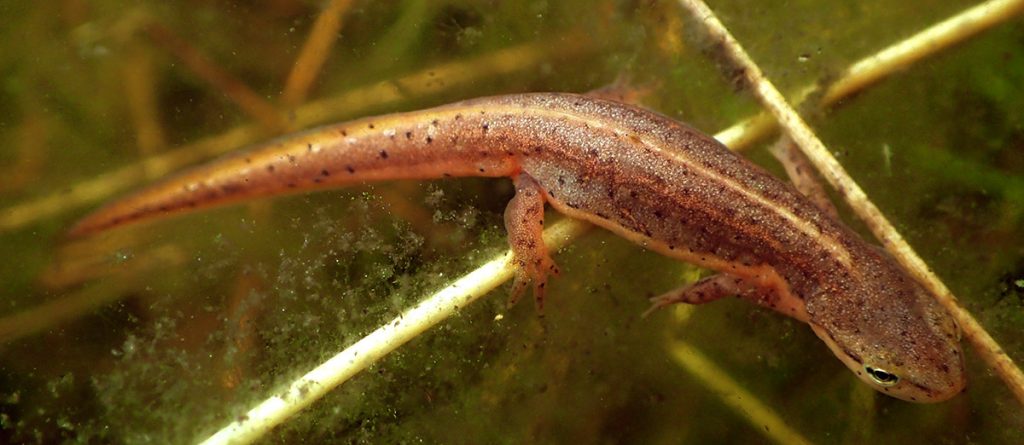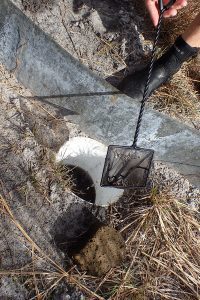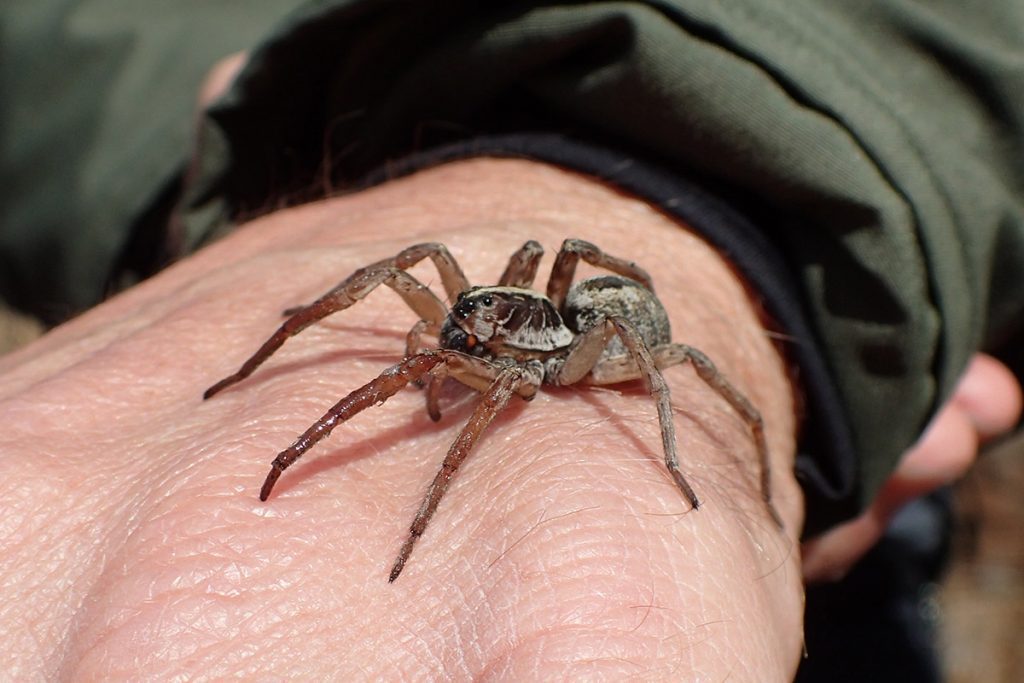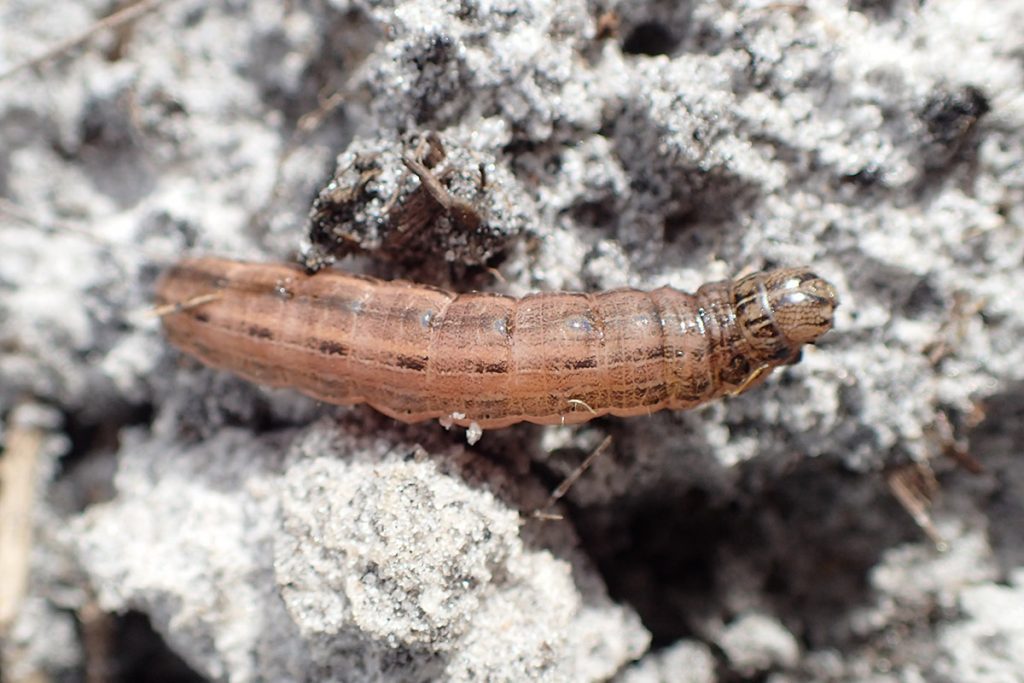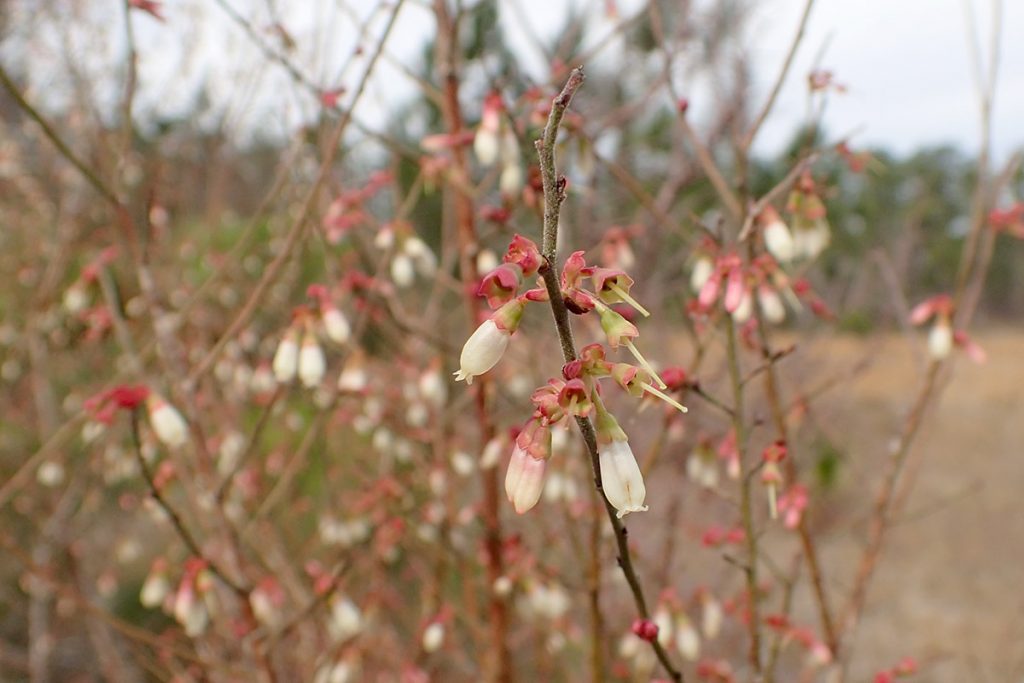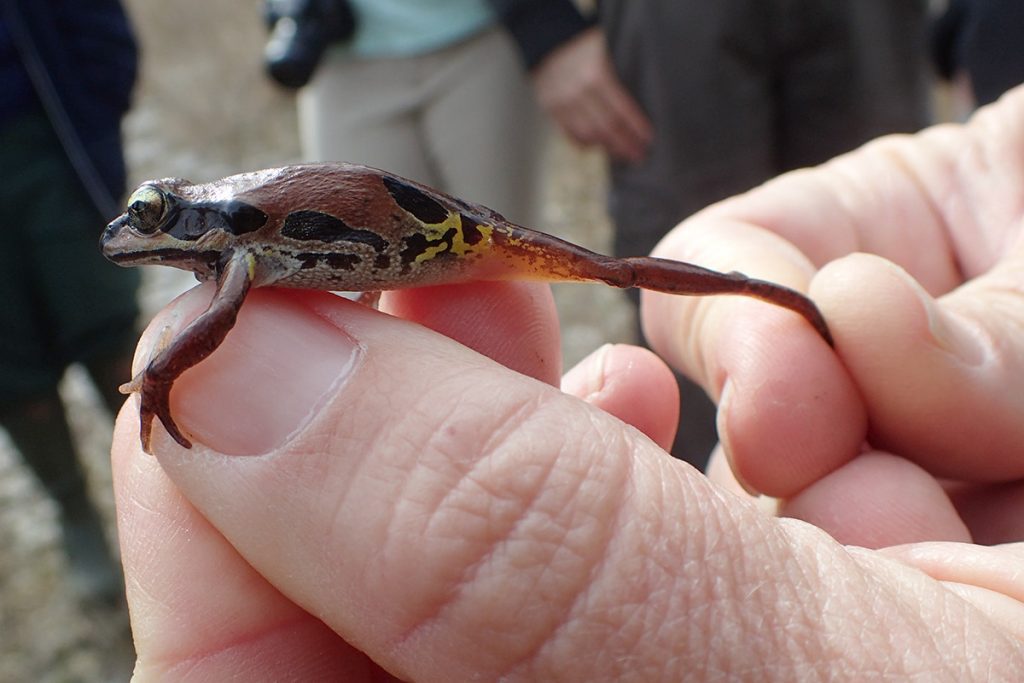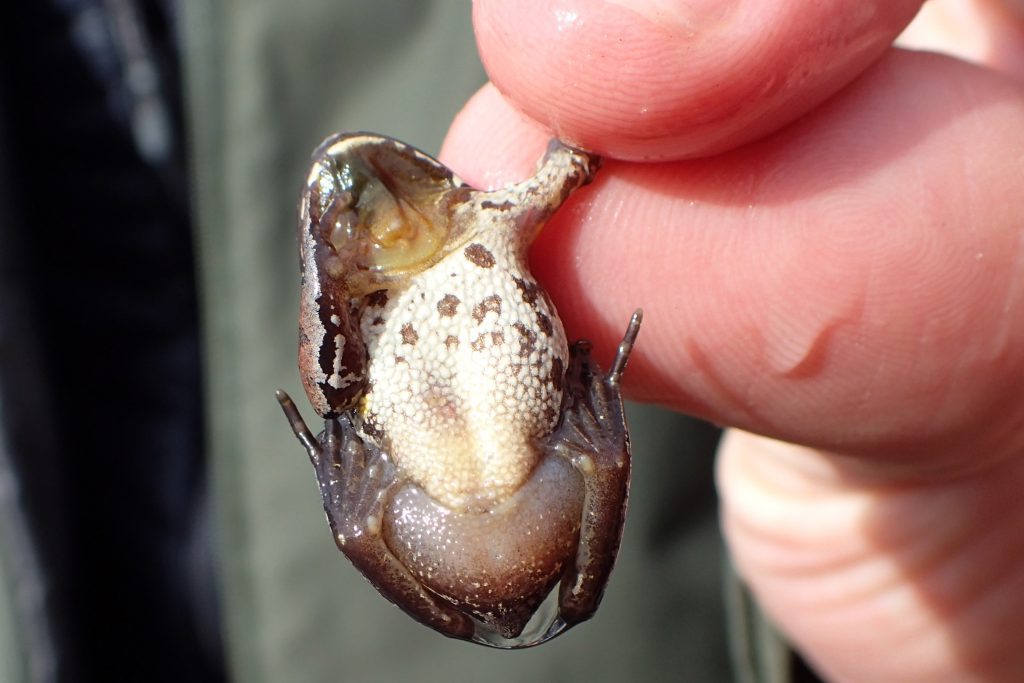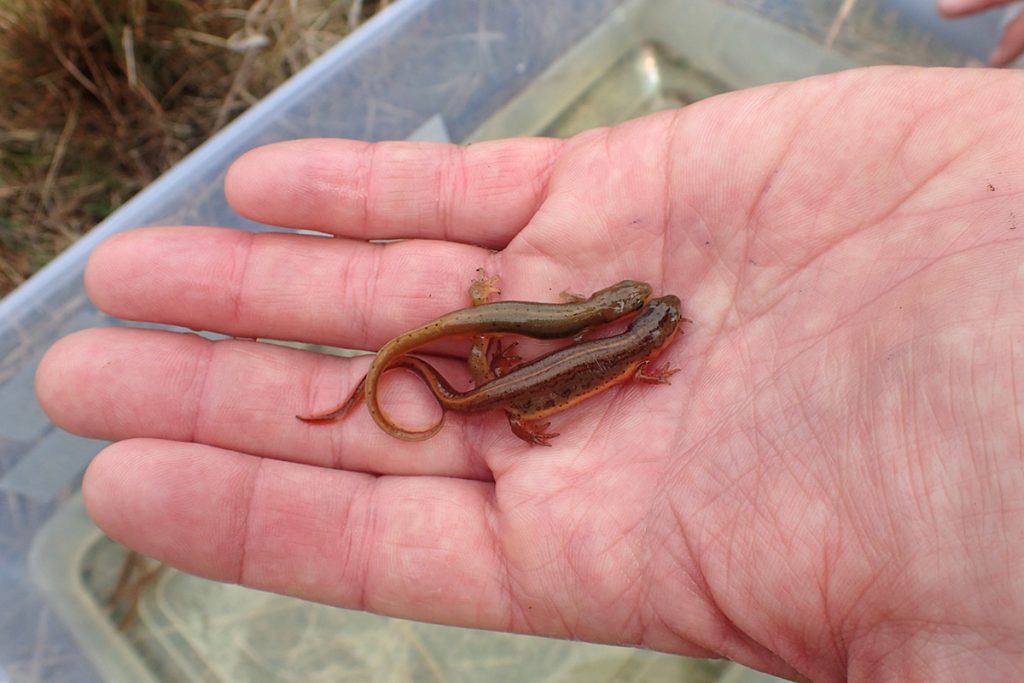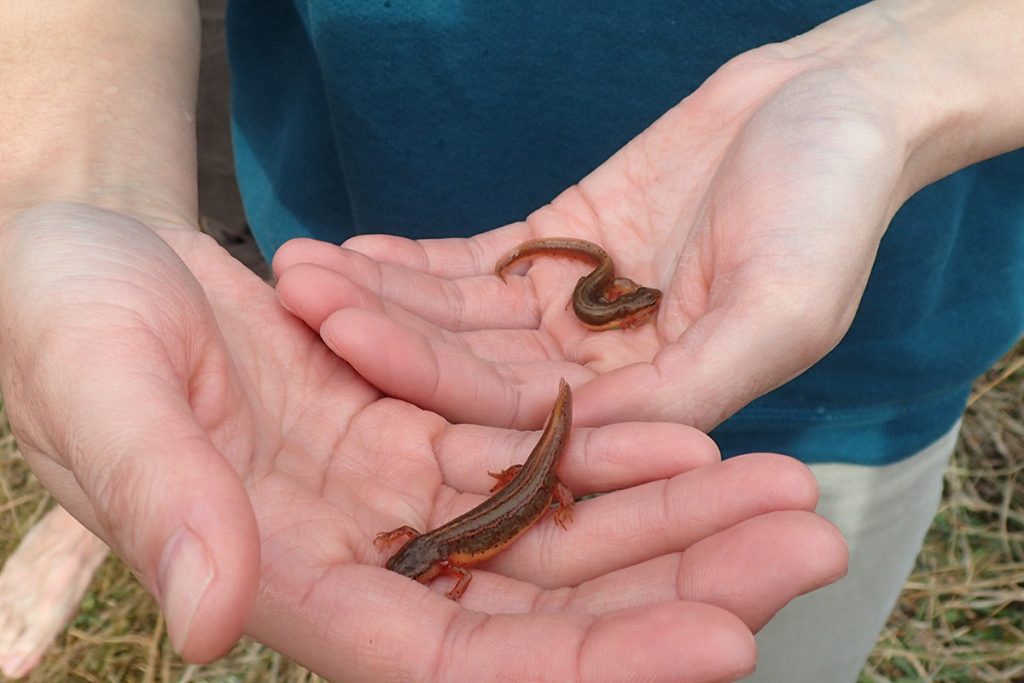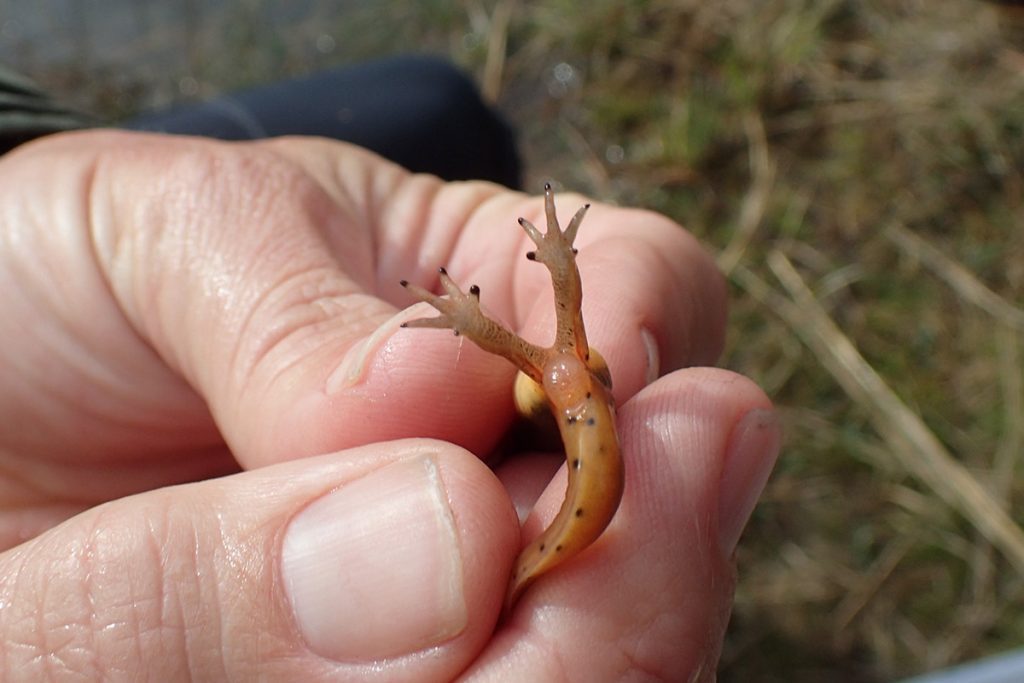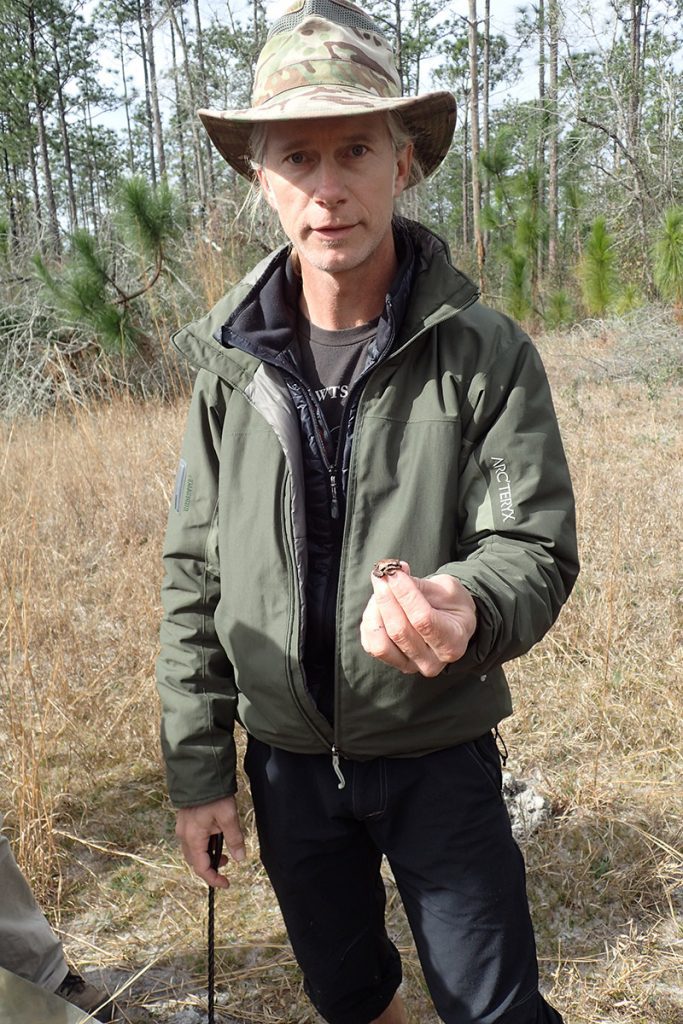When Local Routes returns next Thursday (February 2 at 8 pm ET), we hike to the most remote spot in the viewing area- the Bradwell Bay Wilderness. We’re doing this with Remote Footprints, a passion project of Rebecca and Ryan Means, and their daughter Skyla. In their day jobs, Rebecca and Ryan are biologists for the Coastal Plains Institute. Today, we visited with the CPI and its partners as they released striped newts into the Munson Sandhills.
Rob Diaz de Villegas WFSU-TV
For the first time in twenty years, researchers observed striped newt larvae in the Apalachicola National Forest. It hadn’t been seen in the forest, which was once a stronghold for the species, since the late 1990s. The Coastal Plains Institute had spent six years releasing newts into the forest, hoping to see reproduction in the wild. A few months after their sixth release in January 2016, which we filmed, they dip netted a larval newt that seems to have been bred in the wild. More followed.
In our blog post following last year’s release, we outlined the difficulty of bringing this species back. Typically, striped newts don’t have a high survival rate. Like many invertebrates, they compensate for this by breeding in large numbers. They are small and have few defenses, and are vulnerable to predators.
There is also the challenge of finding them in the wild. CPI’s Ryan Means and Florida Fish and Wildlife biologist Pierson Hill dip net wetlands hours after newt releases. What they have found is that the newts are not especially detectable, even soon after entering a wetland.
Last fall, the Coastal Plains Institute released a report authored by Ryan and Rebecca Means and their research partners. In addition to multiple larval newts, they discovered a few wild adult newts in a wetland outside of their project. Both the larvae and wild adults lack the marks that identify released newts. They DNA test every unmarked newt they catch to test whether they are related to released newts. CPI is still awaiting results.
Today, I went back to the Munson Sandhills region of the forest for the seventh striped newt release. A good sized group of project partners- from the US Forest Service, Jacksonville Zoo and Gardens, and Florida Fish and Wildlife- helped Ryan release this year’s batch.
Unseasonable Flora & Fauna
Striped newts are born in ephemeral wetlands- ponds whose water level rises and falls with the underlying water table. They are born with gills, which they lose when they leave the wetland to live in the pine uplands around the ponds. They return to the ponds to breed.
Ryan, Rebecca, and their volunteers build drift fences around their ponds, which they check daily. This lets them see whether newts are leaving for the uplands (inside buckets) or returning to breed (outside buckets). The fences also allow us to see what other animals make use of the wetlands.
The first thing Ryan did before releasing this year’s newts was to check the drift fences. He found several species which, writing this in January, he called springtime signifiers. In other words, we saw animals (and one flowering plant) that would be typical of warmer springtime months.
This is a Carolina wolf spider (Hogna carolinensis). In our video from last year, you see my son Max release a newt near a fishing spider, which is a newt predator. However, wolf spiders aren’t known to prey on striped newts.
Ryan found this deceased butterfly caterpillar in one of his traps. Despite having lost its color, it looks to me to be a long tailed skipper caterpillar (Urbanus proteus), known as a bean roller. I know these caterpillars well, as I often find them on my green bean plants. Many skipper species have similar looking caterpillars as well, so I’m not 100% sure of this identification.
One reason that butterflies might be breeding out of season is that we have flowers blooming out of season during a warm winter. Ryan spotted this highbush blueberry bush (Vaccinium corymbosum) flowering by the ponds.
Release Site Ponds Benefit More Than Striped Newts
As I mentioned earlier, the water level in ephemeral wetlands is tied to the height of the water table. Right now, several area rivers are at flood stage following an active few weeks of rain. However, the ponds we visited today are lower than they were at this time last year. Tied as they are to the aquifer, rainfall does not directly affect the fullness of an ephemeral wetland.
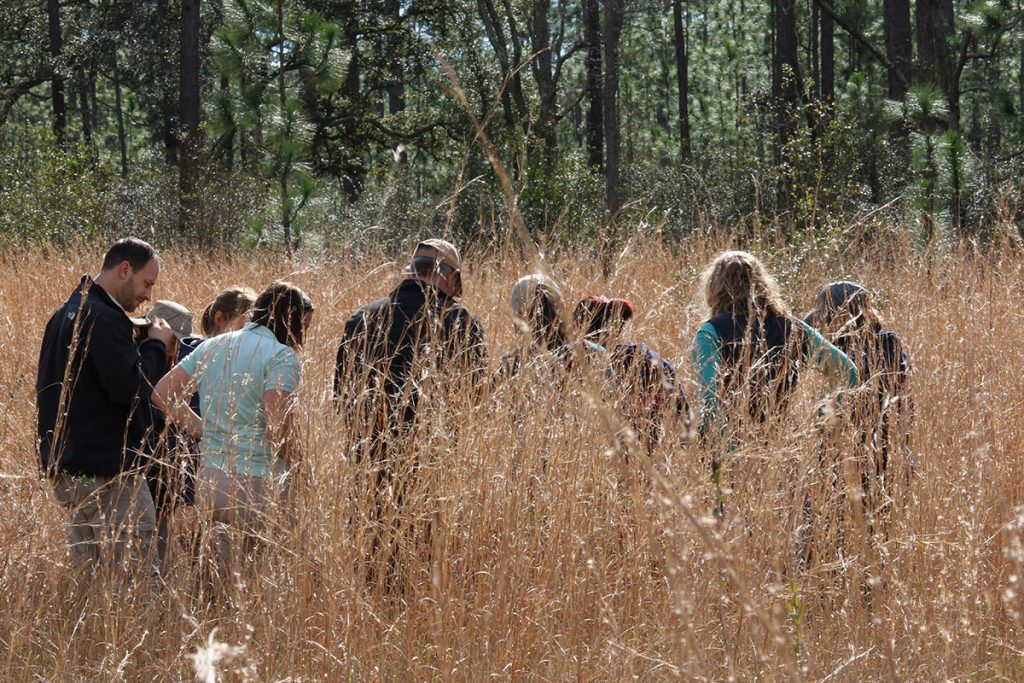
The release party stands among the tall sedge in an ephemeral wetland. The sedge will clear away the next time the area is burned.
Prolonged drought likely caused the disappearance of striped newts in these wetlands; if the wetlands are dry, the newts can’t breed. Knowing that water levels in the ponds are unpredictable, Ryan and Rebecca line them with rubber to retain water longer. This benefits other amphibians as well.
This is a female ornate chorus frog (Pseudacris ornate).
This ornate chorus frog’s throat sack lets us know it’s a male. When looking up its scientific name, I found this recording of its call.
Love and Survival for the Striped Newt
The Means team releases striped newts in pairs- male and female. Today, Ryan showed us how he holds the pair before releasing. If they’re lucky, the male will clasp onto a female, increasing their chances of producing offspring.
Sometimes the newts seemed to like each other…
…and other times not so much.
Ryan showed us the hind claws of a male striped newt. Notice the black tips on each claw. The male newt will use these to clasp onto a female.
After hanging our for a few moments, the newts usually dig into the grass at the bottom of the pond. The hope is that they’ll survive and make larvae. There’s no guarantee they will, and even if they do, they’ll be hard to detect. After last year’s findings, however, we know that it’s possible.

